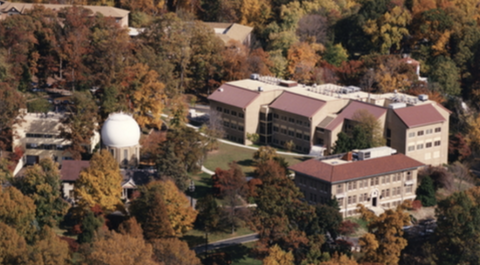Hear the Universe
Carnegie Science astronomers worked with the National Park Service to revamp the Rock Creek Park astronomy exhibit for the park's 135th birthday. The new exhibit combines visuals from world-class telescopes, tactile displays that visitors can explore by touch, and narrated audio descriptions that bring each scene to life. Let's get started!
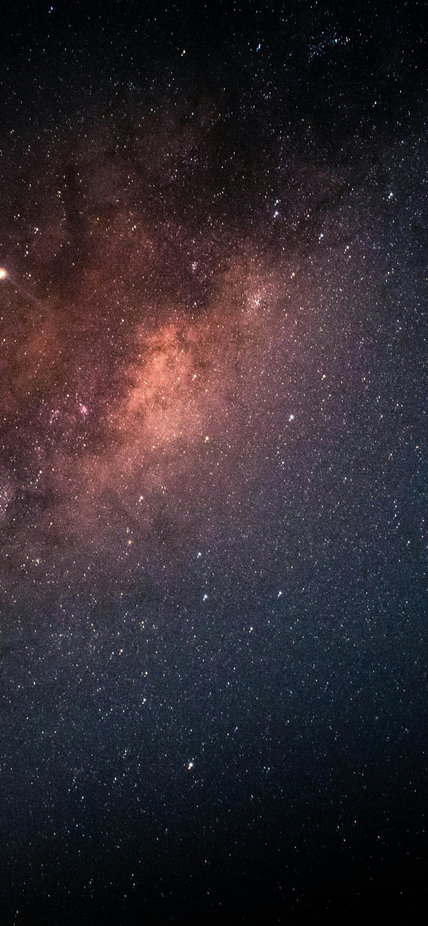

Uranus
Spinning on its side, Uranus experiences extreme seasons that shape its bright polar cap and methane-rich clouds. Webb’s infrared images reveal 11 of its 13 known rings, once barely visible, along with dynamic storm systems. The tactile image lets you trace its tilted orientation and rare atmospheric features.
View Image | Image Credit: NASA, ESA, CSA, STScI; Image Processing: Alyssa Pagan, Macarena Garcia Marin (STScI)
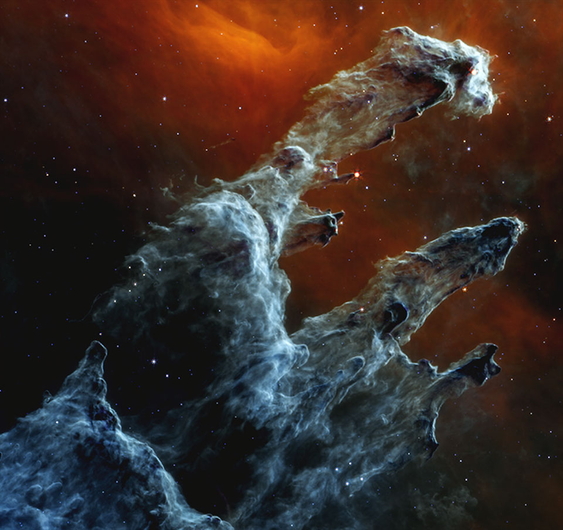
M16: Pillars of Creation
In the Eagle Nebula, towering columns of dust and gas stretch for light-years, cradling clusters of newborn stars. Combining Webb’s infrared data with Chandra’s X-ray view, the tactile image shows the misty pillars alongside the bright pinpoints of young suns lighting up their stellar nursery.
View Image | Image Credit: X-ray: Chandra: NASA/CXC/SAO, XMM: ESA/XMM-Newton; IR: JWST: NASA/ESA/CSA/STScI, Spitzer: NASA/JPL/CalTech; Visible: Hubble: NASA/ESA/STScI, ESO; Image Processing: L. Frattare, J. Major, N. Wolk, and K. Arcand
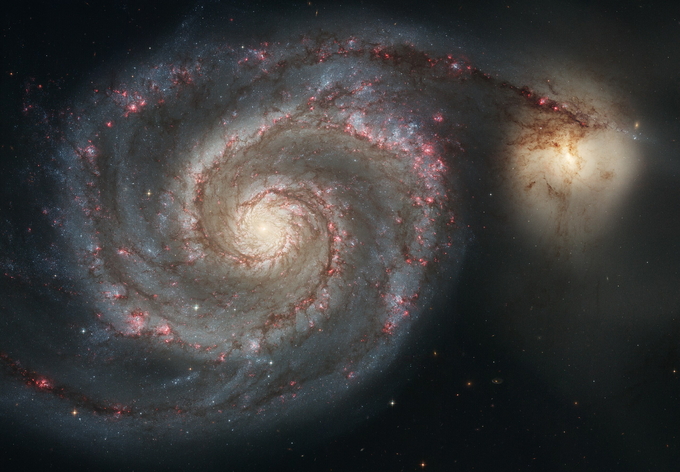
Messier 51: The Whirlpool Galaxy
The Whirlpool Galaxy, 23 million light-years away, is a perfect example of a spiral galaxy. Its graceful arms guide gas and dust into bursts of star formation, while a smaller galaxy tugs at one edge in a slow gravitational embrace. The tactile image traces the Whirlpool’s spiral pattern, offering a glimpse of what awaits our own Milky Way when it meets Andromeda in billions of years.
View Image | Image Credit: NASA, ESA, S. Beckwith (STScI) and the Hubble Heritage Team (STScI/AURA)
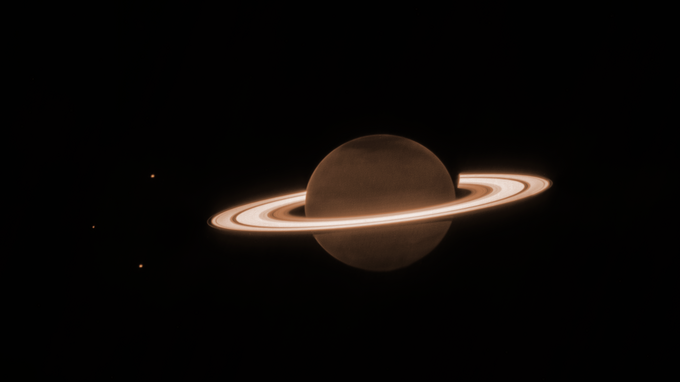
Saturn
Saturn’s spectacular rings are made of countless pieces of ice and rock, some as big as mountains. With more than 270 moons, including Titan—a world with methane lakes—Saturn is a system unto itself. This tactile image, based on Webb’s infrared data, highlights both its banded atmosphere and its dazzling rings.
View Image | Image Credit: NASA, ESA, CSA, Webb Saturn Team; Image Processing: Joseph DePasquale (STScI)

Jupiter
Jupiter is eleven times wider than Earth and home to nearly 100 moons. Its atmosphere is alive with powerful winds and storms, including the Great Red Spot—a tempest as large as Earth. The tactile image shows swirling textures based on Hubble observations, capturing the restless clouds of our Solar System’s biggest planet.
View Image | Image Credit: NASA, ESA, Amy Simon (NASA-GSFC); Image Processing: Joseph DePasquale (STScI)
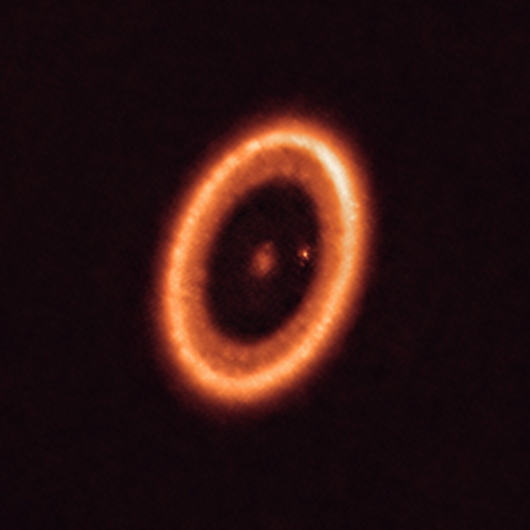
Birth of a Planet
Around the young star PDS-70, dust and gas swirl in a massive disk where new planets are taking shape. The tactile image reveals the disk’s ring-like structure and a growing protoplanet nestled within it. Captured by ALMA, this view gives us a rare chance to watch planet formation as it happens.
View Image | Image Credit: ALMA (ESO/NAOJ/NRAO)/Benisty et al.
Meet Your Tour Guides
Alycia Weinberger is an observational astronomer interested in planet formation, exoplanets, and brown dwarfs. Her expertise includes high contrast/high spatial resolution imaging, infrared spectroscopy, astrometry, and instrumentation. She explores the early history of planets and how they interact with their natal environment, the circumstellar disk. She studies how material is distributed in disks, how disks dissipate, and how the compositions of disks may translate into those of planets.
A Q&A with Alycia WeinbergerAt Carnegie, Kanodia focuses on measuring the masses of a sample of giant planets orbiting M dwarfs, and then leverages this to estimate their detection sensitivity and occurrence rates, as observed in the TESS mission. He combines this population of transiting giant planets with published radial velocity survey results to better understand the formation processes of gas giants around M dwarfs and their dependence on stellar and orbital parameters.
Scientist WebsiteMichael Wong is an astrobiologist and planetary scientist whose primary scientific interests are planetary atmospheres, habitability, biosignatures, and the emergence of life. He also hosts a podcast that examines science, technology, and culture through the lens of Star Trek.
Q&A with Mike WongMore Details
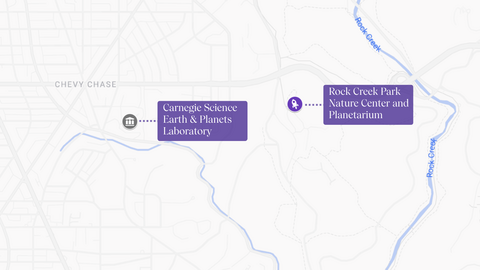
This exhibit is located at the Rock Creek Park Nature Center and Planetarium, which serves as the park's visitor center and offers hiking information, brochures and maps, a bookstore, and exhibits on astronomy and local wildlife. It houses the only planetarium in the National Park Service. Many of the park's ranger-led programs start or take place at the Nature Center.
Rock Creek Park Nature Center and Planetarium
5200 Glover Rd NW, Washington, DC 20015
https://www.nps.gov/rocr
+1 202-895-6070
Special thanks to 3D Pea and Image to STL, which allowed us to create the tactile displays for this exhibit.
